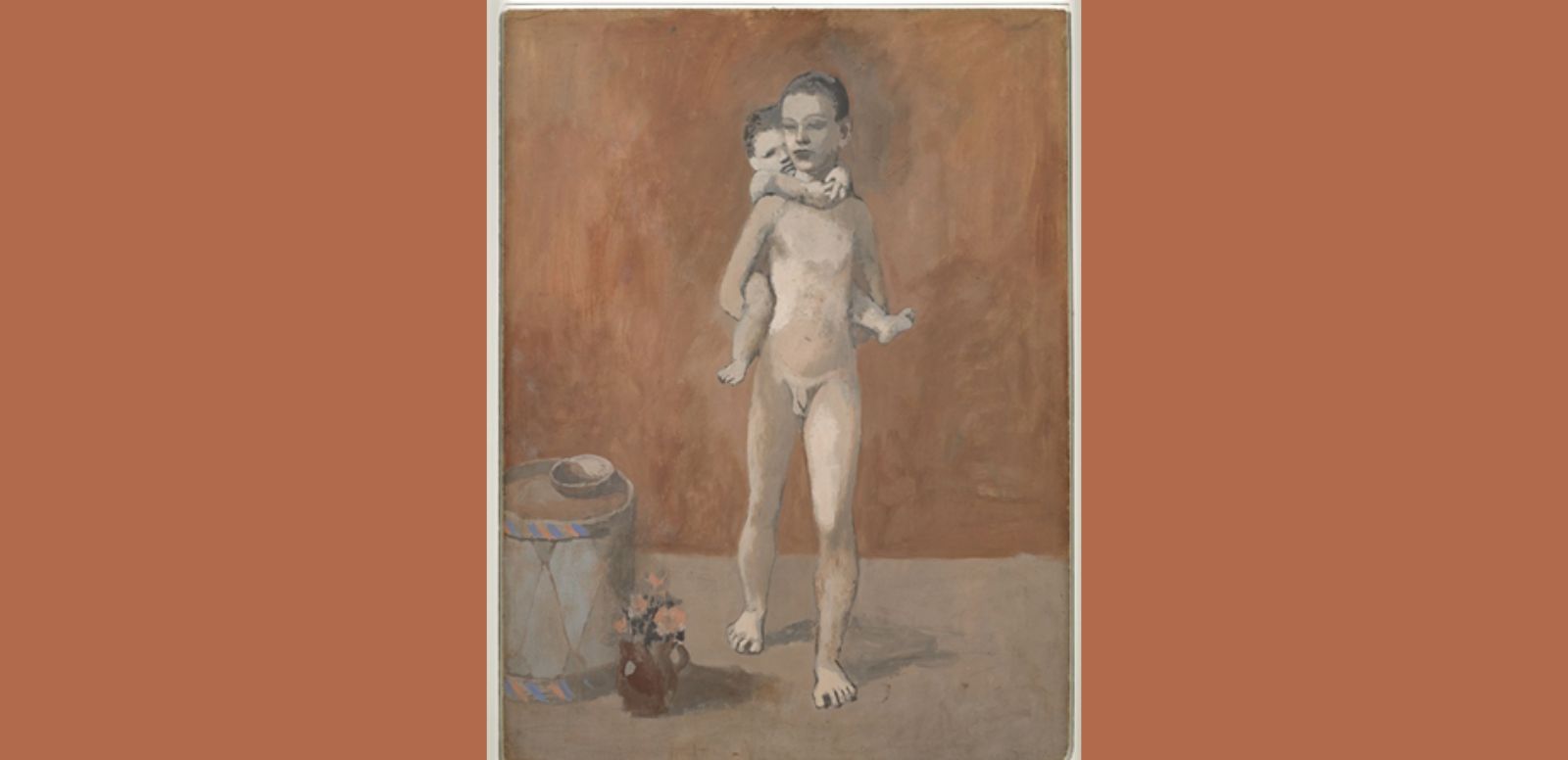
Musée national-Picasso París
© Sucesión Picasso, VEGAP, Madrid, 2023
Pablo Picasso's The Two Brothers (1906) is a reflection on the fraternal relationship. In 1906, Picasso spent time in Gósol, a picturesque village in upper Catalonia. Far from the urban turmoil, this rural setting would significantly influence his art. The two children in the painting reflect the change in the artist's style and palette during this period.
The protagonists of the work are two brothers, captured in an intimate, fraternal moment. One of them carries the other on his back, evoking a sense of mutual support and trust. Although the circus elements, such as the drum, refer to earlier circus-related works, a new atmosphere is observed here. Unlike the melancholy figures of the blue stage featured in works such as Two Acrobats with Dog (1905), The Two Brothers (1906) conveys a new, more vitalistic serenity.
The color palette also plays a crucial role. Instead of the cold, sad tones of the blue stage, the figures of the brothers are bathed in warm, pink and ochre tones. This combination recalls the colors of the land of upper Catalonia, where Picasso resided in these vacation months. In addition, there is a change in the construction of the forms, which return to three-dimensionality through modeling after the flat forms of the harlequins of the previous stage.
In The Two Brothers (1906), Picasso strikes a balance between tradition and innovation. The rounded contours and solidity of the figures evoke a certain classicism, infusing the work with a sense of timelessness and serenity. This painting shows a progressive move away from the themes of loneliness and sadness of his blue period to embrace a warmer palette and a subject matter centered on human connection.
Sources:
Musée national-Picasso París:

